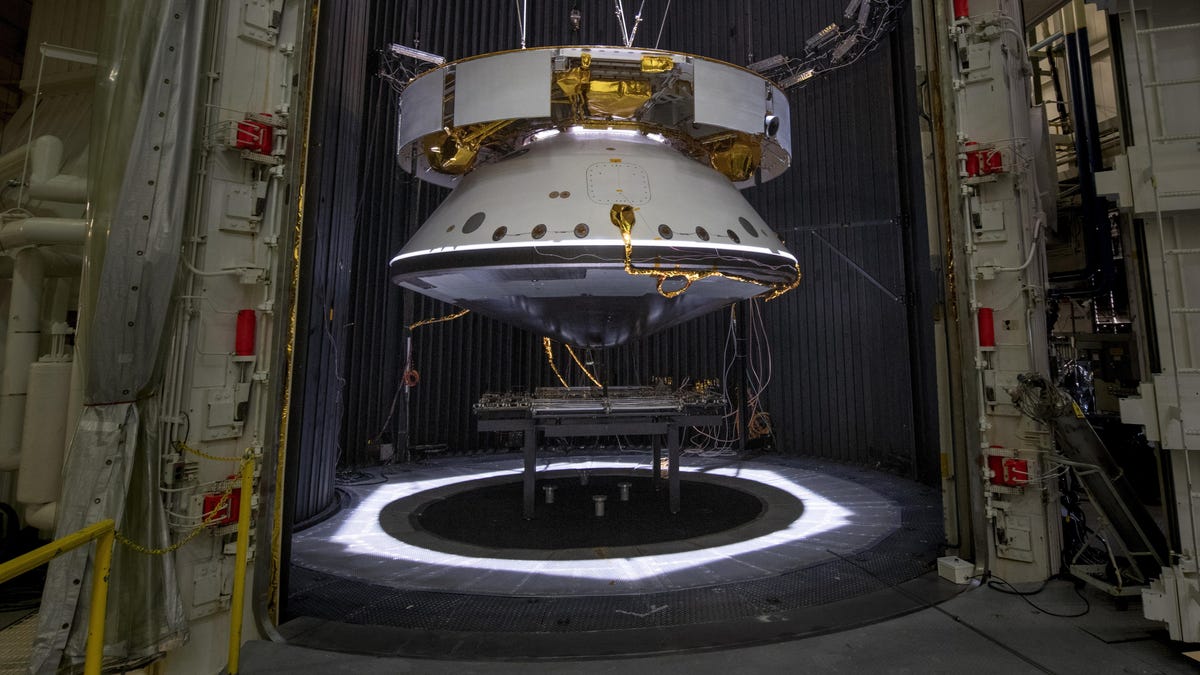Mars 2020 spacecraft subjected to brutal tests as it prepares for launch
NASA's rocket ship on its way to Mars is having a good time.

When I test a vacuum, I just sprinkle oats all over the floor. When NASA tests one, you get this.
NASA will leave no Martian rock unturned as it prepares the next Mars robot for the chaos of space travel and landing on the red planet.
Over the last two months, the Mars 2020 spacecraft has been subjected to a number of extreme tests designed to ensure it can withstand an intense rocket launch and the extremes of space. NASA's Jet Propulsion Laboratory has put the futuristic craft through "acoustic and thermal vacuum" testing -- and it has passed with flying colors.
The test involve blasting the spacecraft with sound levels as high as 150 decibels -- the type of levels you'd hear standing next to a jet at take-off -- to replicate the environment of a launch, according to Andy Rose, manager of JPL's environmental test facilities.
After the sound blast tests were performed six times, NASA put the Mars 2020 rover through a brutal test that replicates the vacuum of space. That required the spacecraft to be transported to the Space Simulator Facility and suspended in midair, as seen in the above image.
"We 'put it in space' by placing the spacecraft in this huge vacuum chamber we have here at JPL," said David Gruel, assembly, test and launch manager, in a statement. "We pump out the atmosphere, then chill parts of it and cook others while testing the performance of the entire spacecraft."
The facility doesn't quite achieve a full vacuum but it does get really, really cold. The team drop the temperature in the chamber to -200 degrees Fahrenheit (approx. 129 degrees Celsius). But space also subjects travelling robots to unshielded radiation from the sun so NASA shines a handful of powerful lamps onto the spacecraft. The whole process takes just over a week.
"Everything looked great - which is a good thing, because next time this spacecraft stack hits a vacuum, it will be on its way to Mars for real," said Gruel.
Mars 2020 will depart Earth from Cape Canaveral in Florida in July 2020. It's expected to arrive at Mars' Jezero Crater on Feb. 18, 2021. Mars 2020 will follow a long list of NASA-built and operated Martian robots, including the recently-deceased Opportunity rover. NASA bid farewell to that plucky explorer in February after a planet-encircling dust storm fried its battery. However, the planet of the robots is still busy with residents. One explorer -- Curiosity -- and one Marsquake detector -- InSight -- are currently living and working on its surface.

